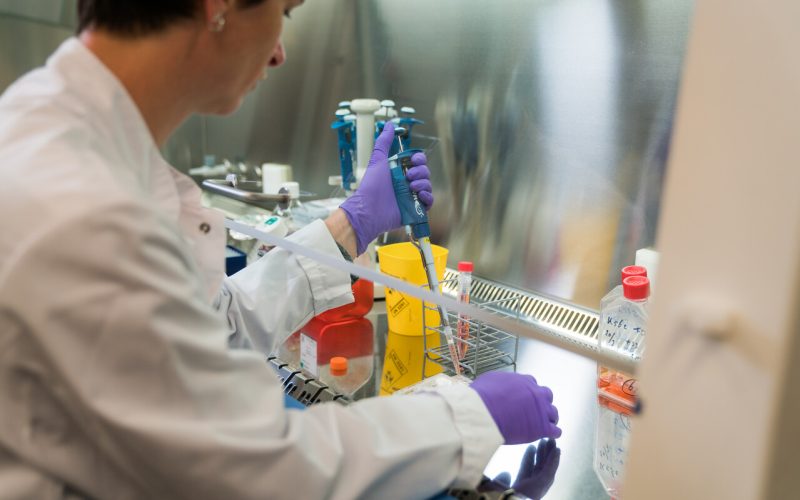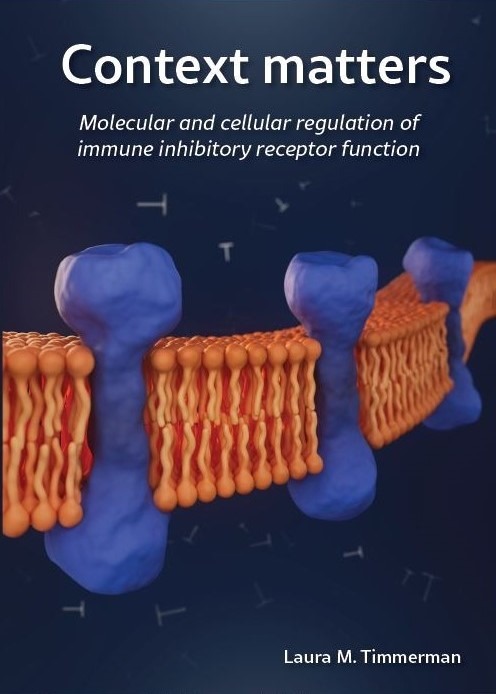In her PhD project, Laura Timmerman (UMC Utrecht) investigated various aspects of immune inhibitory receptor function: (1) how signals are transmitted, (2) the influence of inflammation and (3) how these receptors may influence each other. She concluded that the context in which an immune inhibitory receptor functions is important for its effect.
The immune system protects against harmful invaders like bacteria, viruses, and parasites, and also is able to remove cancer cells. It recognizes pathogens and malignant cells and subsequently provides immunity through humoral and cellular responses. To keep a person healthy, the immune system needs to stay in balance. If it works too hard, it can cause autoimmune diseases. On the other and, if it is too weak, one might become more vulnerable for infections and cancer. Special proteins called immune inhibitory receptors (IIRs) help to keep this balance. They act like brakes on the immune system, stopping it from becoming overactive. However, some cancer types use these ‘brakes’ to hide themselves from immune cells. In addition, cancer treatments can block IIRs so the immune system can attack again. In diseases where the immune system is too active, turning on IIRs can help to calm it down. In her PhD thesis, Laura Timmerman, MSc (Center for Translational Immunology, UMC Utrecht) and her colleagues at the Inhibitory Receptor Lab studied various aspects of the function of several IIRs including CD200R and PD-1.
“The findings in my PhD thesis contribute to a deeper understanding of immune inhibitory receptors. Context, like inflammation and the presence of other IIRs, can influence IIRs. This knowledge can help improve future treatments for cancer, autoimmune diseases, and infections.”
The inhibitory signaling of CD200 receptor 1 (CD200R) is linked to its NPxY motif, but NPxY motifs usually help with protein movement rather than signaling. Research by Laura Timmerman and colleagues found that while the tyrosine in the NPxY motif is conserved across species, other parts of the motif are not. They identified a unique sequence (EEDExxPYxxYxxKxNxxY) that is key for the inhibitory function of CD200R.
PD-1 blockade therapy has improved melanoma treatment, but not all patients benefit, and identifying responders prior to treatment is challenging. Increased IL-6 levels in blood are linked to poor response to treatment. In her PhD work, Timmerman tested the effects of IL-6 and type I interferon (IFN) on T cells with PD-1 blockade. She found that IFN-α reduces the effectiveness of PD-1 blockade therapy. However, in a cohort of 22 melanoma patients, neither type I IFN score nor IFN-γ secretion predicted treatment response.
Laura Timmerman, MSc (1993, Nieuwegein) defended her PhD thesis on November 24, 2025 at Utrecht University. The title of the thesis was “Context matters: Molecular and cellular regulation of immune inhibitory receptor function”. Supervisor was Prof. Linde Meyaard, PhD and co-supervisor was Michiel van der Vlist, PhD (both Center for Translational Immunology, UMC Utrecht). Laura works as an infection prevention specialist in training at the Diakonessenhuis in Utrecht.

